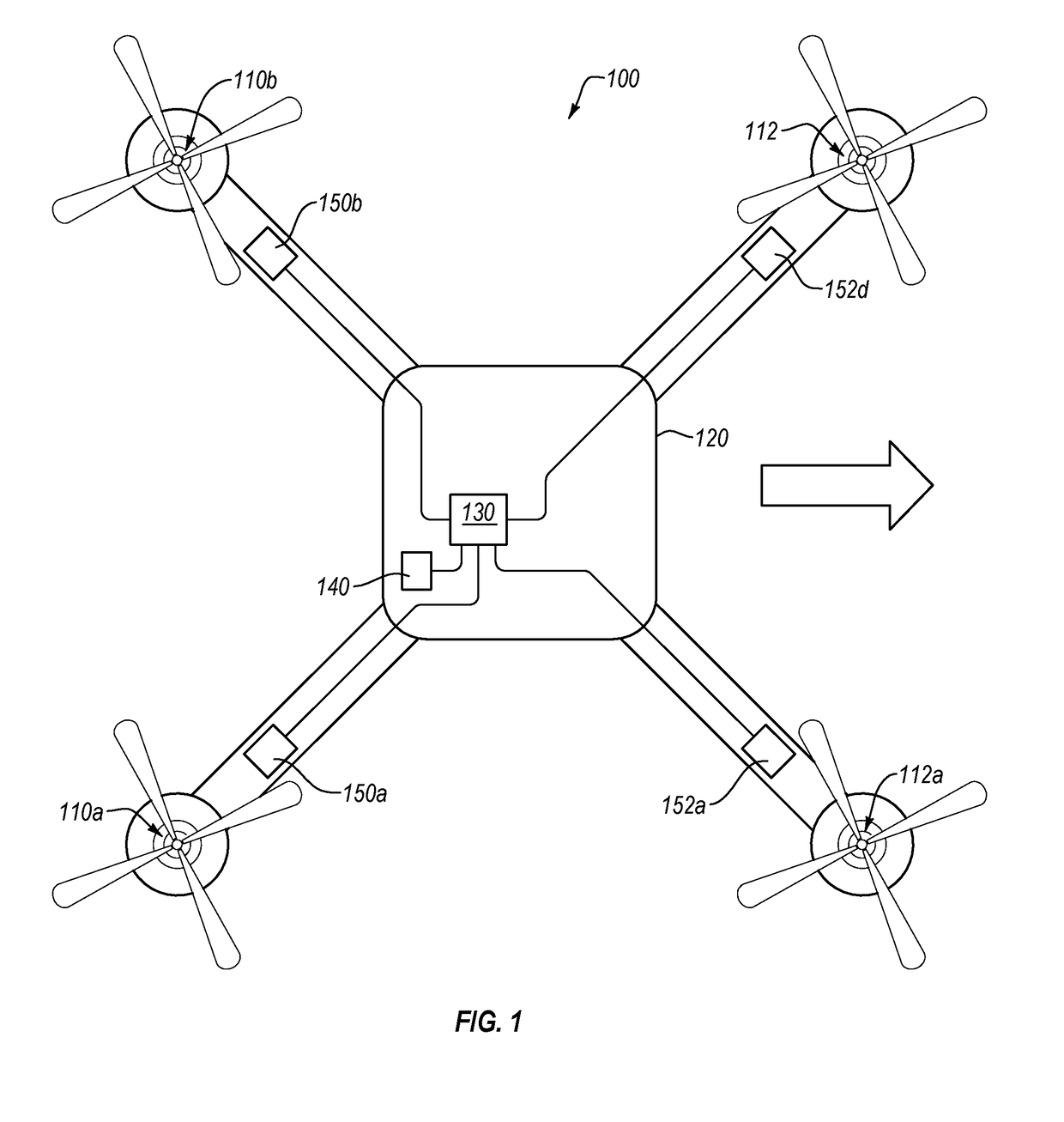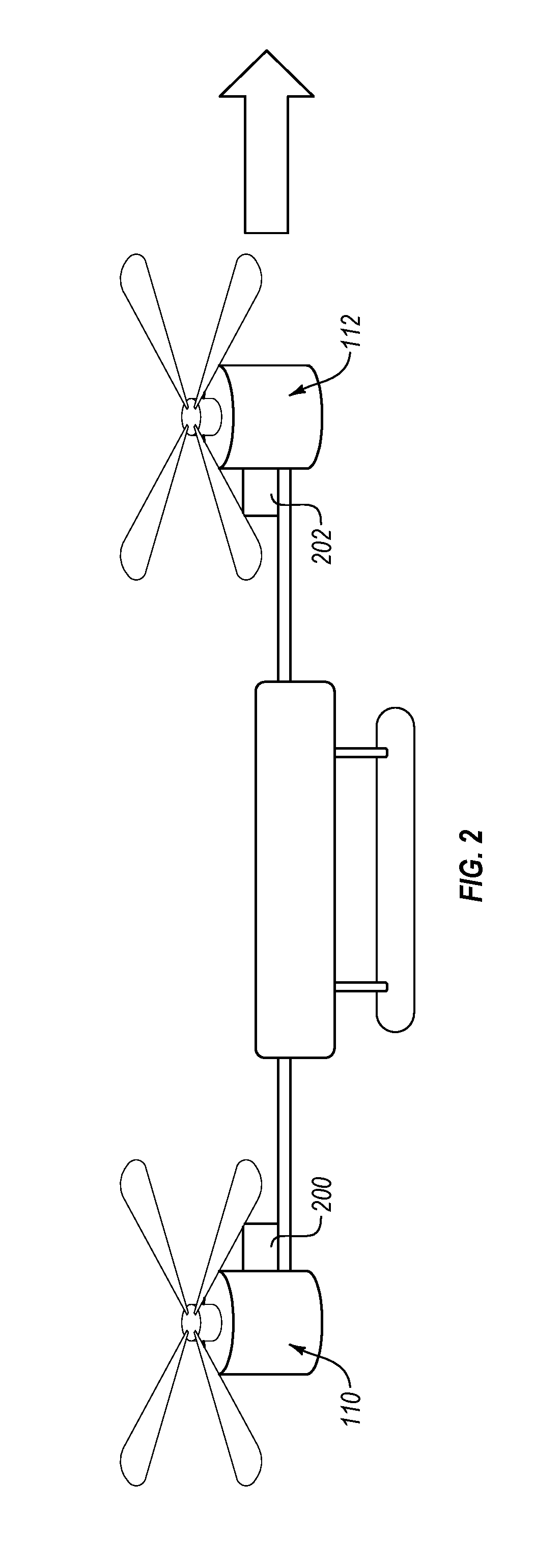Thrust vectoring on a rotor-based remote vehicle
a remote vehicle and rotor technology, applied in vehicle position/course/altitude control, process and machine control, instruments, etc., can solve the problems of insufficient control system for achieving and maintaining flight stability, deficient sensors, slowing the wide-spread use and adoption of rotor-based drones, etc., to reduce drag, increase the range and speed of a particular rotor-based remote flying vehicle platform, and minimize the effect of drag
- Summary
- Abstract
- Description
- Claims
- Application Information
AI Technical Summary
Benefits of technology
Problems solved by technology
Method used
Image
Examples
Embodiment Construction
[0019]The following discussion now refers to a number of methods and method acts that may be performed. Although the method acts may be discussed in a certain order or illustrated in a flow chart as occurring in a particular order, no particular ordering is required unless specifically stated, or required because an act is dependent on another act being completed prior to the act being performed.
[0020]Disclosed embodiments extend to systems, methods, and apparatus configured to provide a rotor-based remote flying vehicle platform with thrust vectoring. In particular, disclosed embodiments comprise rotor-based remote flying vehicle platforms with motors that comprise at least single-axis variable tilting motors. Depending upon desired flight characteristics, the motors can be properly tilted to increase directional thrust and to minimize drag caused by the vehicle frame. As such, the range and speed of a particular rotor-based remote flying vehicle platform can be significantly incre...
PUM
 Login to View More
Login to View More Abstract
Description
Claims
Application Information
 Login to View More
Login to View More - R&D
- Intellectual Property
- Life Sciences
- Materials
- Tech Scout
- Unparalleled Data Quality
- Higher Quality Content
- 60% Fewer Hallucinations
Browse by: Latest US Patents, China's latest patents, Technical Efficacy Thesaurus, Application Domain, Technology Topic, Popular Technical Reports.
© 2025 PatSnap. All rights reserved.Legal|Privacy policy|Modern Slavery Act Transparency Statement|Sitemap|About US| Contact US: help@patsnap.com



